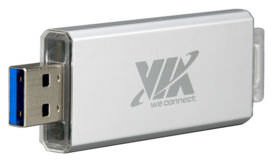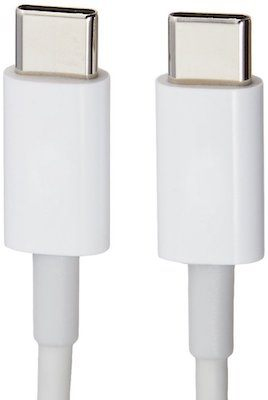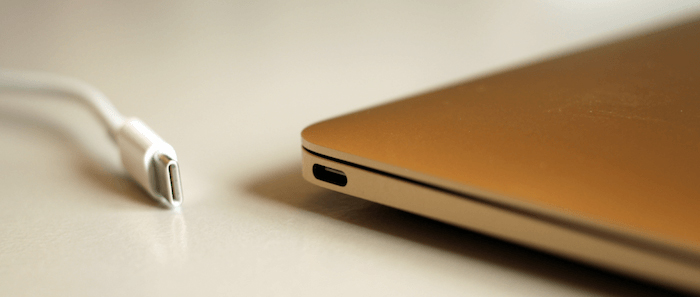Differentiate USB 2.0 and USB 3.0
USB 3.0 is a faster USB standard and more energy efficient than USB 2.0. USB 3.0 is backward compatible with USB 2.0 devices. However, data transfer speeds will be limited to USB 2.0 speeds when USB 3.0 interacts with USB 2.0 because USB 2.0 has lower speeds. In 2014, a new USB 3.1 standard was announced and is expected to be released by the end of 2015.
Differentiate USB 2.0 and USB 3.0
- 1. Comparison table USB 2.0 and USB 3.0
- 2. What is USB 3.0 and USB 2.0?
- 3. What is USB 3.1?
- USB 3.1 Gen 1
- USB 3.1 Gen 2
- Something about USB Type C (USB-C)
- 4. USB 3.0 has more outstanding features than USB 2.0
- 5. Differentiate USB 2.0 and USB 3.0
- 6. Backward compatibility
- 7. Price
1. Comparison table USB 2.0 and USB 3.0

2. What is USB 3.0 and USB 2.0?

Developed in the 1990s, Universal Serial Bus or USB for short, is a wired connection standard in computers. USB used for the purpose of connecting devices (phones, tablets, cameras, camcorders, music players) to computers. Devices such as smartphones, PDAs, tablets, and portable gaming devices (like PS3, PSP, etc.) can connect to a computer with a USB port.
Released ten years ago in 2008, USB 3.0 is the third official version of the USB standard. It upgraded USB 2.0, released in 2000 and a relatively slow transfer rate of 480 Mbit / s. USB 2.0 can load 500 mA power at 5V voltage. USB 3.0 has significantly more power load than USB 2.0, up to 900 MA at 5V voltage and 5 Gigabit / sec data transfer (Gbit / s). And more than 5 years later, in 2014, USB 3.1 was announced and is expected to be released by the end of 2015.

3. What is USB 3.1?
USB 3.1 generation 1

USB 3.1 Gen 1 (USB 3.1 Gen 1) is similar to USB 3.0. In fact, with the release of USB 3.1 Gen 1, all USB 3.0 ports have been renamed to USB 3.1 Gen 1. Therefore, the existing cables and devices now support USB 3.1 Gen 1. Standard This made some changes like the USB Type C connector on the new MacBook Pro.
Although there is a new name, the ability to transfer data and download power remains the same as USB 3.0. USB 3.1 Gen 1 supports speeds up to 5 Gbit / s or 625 MB / s and loads power up to 900 mA at 5V voltage. The USB 3.1 Gen 1 connector looks like a USB 3.0 A connector, in blue on the inside. Unlike Gen 2, Gen 1 has more than one type of connector. It has a bulky Type B connector (also known as a bulky printer) as well as a thin Micro-B connector. These ports are not capable of supporting all USB 3.1 Gen 2 power supplies.
2nd generation USB 3.1

This standard was released in July 2013, USB 3.1 Gen 2 has a transfer rate of 5 Gbit / s like USB 3.1 Gen 1 and allows a maximum speed of up to 10 Gbit / s (1.25 GB / S). Gen 2 also has the ability to load higher power, 5000 mA at 20V voltage via USB Type C connector.
Only USB Type C connectors can fully handle Gen 2's power and bandwidth. However, it also has a short cable length. In addition, devices and cables support newer, less popular Gen 2 standards.
Something about USB Type C (USB-C)

USB Type C (USB-C) is not only a connection port but also a USB standard. Although the structure of the connection port makes some of the features of USB 3.1 Gen 2 more excellent, it does not determine the transfer rate and the ability to load the power, instead you can use the device. on both ends of the cable to determine this information. But because the documents are not specifically stated, some buyers often use USB 3.1 with USB-C. However, if you buy quality cable with USB Type C connector on both ends, it will support all features of USB 3.1 Gen 2.
USB-C is an impressive connection port. It replaces all previous connection ports, creating a popular, robust connection, capable of transmitting up to 5,000 mA at a safe voltage of 20V.
4. USB 3.0 has more outstanding features than USB 2.0
- Transfer rate: USB 2.0 has a transfer rate of 480 Mb / s and USB 3.0 has a transfer rate of 4.8 Gb / s - 10 times faster than USB 2.0 .
- Additional number of wires: The number of wires in USB 3.0 doubles, from 4 wires to 8 strings. Additional wires need more space in both the cable and connection, so new connection types have been designed.
- Power consumption: USB 2.0 provides 500 mA while USB 3.0 provides up to 900 mA. USB 3.0 devices provide more power when needed and save energy when the device is connected but not working.
- Multiple bandwidths: Instead of processing data in one way, USB 3.0 uses two one-way data paths, one to receive data and one to transmit data while USB 2.0 can only process data. in one direction.
- New feature: A new feature has been added on USB 3.0 (using NRDY and ERDY packages) to inform a device that is not in sync with the server.
When data is transferred via USB 3.0 device, cable, and connection, the server sends a request to select how to connect devices. These devices may be accepted for connection or ejects (removed).
If accepted, the device will send data or receive data from the server.
If there is no buffer or data space, it will respond with a Not Ready signal (NRDY) - signal to indicate that the server cannot process the request. When the device is ready, it sends an Endpoint Ready (ERDY) to the host that will then redo the connections.
5. Differentiate USB 2.0 and USB 3.0
Usually USB 2.0 standard pins are black, and USB 3.0 standard pins are blue.

From left to right: Micro USB Type AB, Micro USB Type B, USB 2.0 Type A, USB 2.0 Type B, USB 3.0 Type A, USB 3.0 Type B, USB 3.0 Type Micro B, Mini USB Type A
6. Backward compatibility
USB 3.0 standard is backward compatible with USB 2.0 standard. However, the speed is limited because the USB 2.0 port has lower speed.
However, USB 3.0 type B will not be compatible with USB 2.0 and devices using USB 2.0 standards. This means that USB 2.0 and USB 1.1 standard peripherals cannot be connected on USB 3.0 type B standards, although the USB 2.0 standard can be used to connect to USB 3.0 standard devices if is within the USB 2.0 standard speed range.
7. Price
In terms of price, USB 3.0 is much more expensive than USB 2.0.
Explore more:
- Prevent Autorun.inf from infiltrating your computer via USB
- Instructions for creating a USB drive contain many operating system installers
- 20 best USB boot methods
Having fun!
You should read it
- How to accurately distinguish iPhone 6 or iPhone 6s?
- How to Install a UHF Connector
- Why do some modern computers still have Serial ports?
- How to identify counterfeit money, real money from the State Bank you should know to not be fooled
- How can Apple profit from the upcoming USB-C port on the iPhone?
- The iPhone 12 may not have a USB-C port, while the iPhone 2021 will remove the connector
- What is USB Type C? Type C cable models are widely used
- Basic functions of some HDMI connectors
May be interested
- Differentiate the type of laptop currently available
 when the demand for computers is extremely diverse, laptop manufacturers have created products with different sizes and configurations to meet different customers.
when the demand for computers is extremely diverse, laptop manufacturers have created products with different sizes and configurations to meet different customers. - Differentiate POP and IMAP
 if you've ever set up an email application, you probably know two terms pop and imap. but do you understand the difference between these two protocols and how the impact of each protocol on your email account?
if you've ever set up an email application, you probably know two terms pop and imap. but do you understand the difference between these two protocols and how the impact of each protocol on your email account? - Differentiate indicator lights in Cisco Switch
 as an employee of a company with cisco's large, multi-switch network, every time i see the switch's flashing lights like a music player's light, they look attractive and attractive, but whether do you know what message they convey?
as an employee of a company with cisco's large, multi-switch network, every time i see the switch's flashing lights like a music player's light, they look attractive and attractive, but whether do you know what message they convey? - Difference between NFC and RFID
 there is some confusion between the two technologies rfid and nfc. although they are similar in many ways, there are some differences between the two technologies. let's find out the difference between nfc and rfid through the following article!
there is some confusion between the two technologies rfid and nfc. although they are similar in many ways, there are some differences between the two technologies. let's find out the difference between nfc and rfid through the following article! - HOW TO INSTALL ISA SERVER ENTERPRISE 2000 - Part III
 how to configure isa server to work with three types of isa clients: securenat client, web proxy client and firewall client. the instructions on how to configure isa server and differentiate different types of isa clients, which can be used according to different circumstances, can help the admin take advantage of isa and deploy properly with love. bridge on your organization's network system
how to configure isa server to work with three types of isa clients: securenat client, web proxy client and firewall client. the instructions on how to configure isa server and differentiate different types of isa clients, which can be used according to different circumstances, can help the admin take advantage of isa and deploy properly with love. bridge on your organization's network system - Differentiate between Gootkit, Bootkit and Rootkit
 along with the development of the technology world in general and the internet in particular, security threats are also evolving in both quantity and danger level.
along with the development of the technology world in general and the internet in particular, security threats are also evolving in both quantity and danger level. - Differentiate app, plugin and extension Chrome
 google chrome is the most well-supported and fully-featured web browser, supported by applications, plugins and extensions made by third-party developers.
google chrome is the most well-supported and fully-featured web browser, supported by applications, plugins and extensions made by third-party developers. - Differentiate Apple ID and iCloud
 some of you are new to iphone and ipad devices, saying that they often confuse apple id and icloud accounts together and don't know what they are different and similar. today, the network administrator will be able to distinguish icloud and apple id from you and provide some information to help you know how to use them more effectively.
some of you are new to iphone and ipad devices, saying that they often confuse apple id and icloud accounts together and don't know what they are different and similar. today, the network administrator will be able to distinguish icloud and apple id from you and provide some information to help you know how to use them more effectively. - Differentiate between PVC and PE food wrap, which is safe and best
 the choice of food wrap and the correct usage are important to ensure food safety.
the choice of food wrap and the correct usage are important to ensure food safety. - Differentiate between SUM, SUMIF, SUMIFS and DSUM functions
 whenever you enter a function = sum in a cell in excel, you will get a lot of functions starting with sum and wondering how they are different? this article will help you solve that question.
whenever you enter a function = sum in a cell in excel, you will get a lot of functions starting with sum and wondering how they are different? this article will help you solve that question.










 Top 5 best heat sinks 2019
Top 5 best heat sinks 2019 Ways to check computer performance
Ways to check computer performance Recording on computers does not need software
Recording on computers does not need software The difference between a mid tower and a full tower computer case
The difference between a mid tower and a full tower computer case 7 mistakes easily 'kill' SSDs
7 mistakes easily 'kill' SSDs Learn about how the CPU works
Learn about how the CPU works